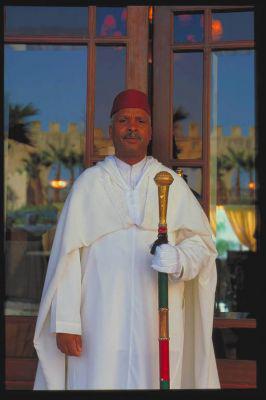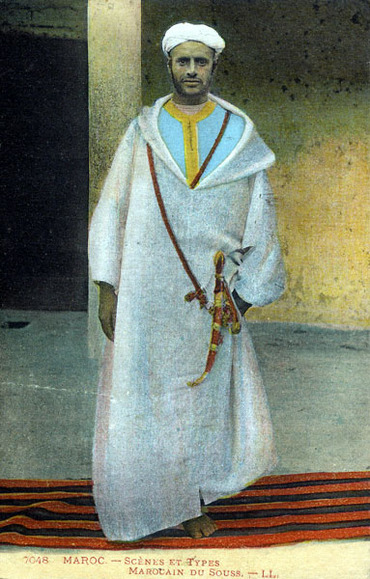Men usually only wear a djellaba on special occasions, sometimes topped with the famous Moroccan red cap, called a fez or tarbouche, and yellow leather slippers, known as baboush or belgha. The woman’s djellaba is more colorful compared to the man’s, and nowadays djellabas are becoming shorter and slimmer. There are verses of the Koran that mention the djellaba as a garment to be worn by Muslim women. A djellaba is mostly worn outside the house and there are djellabas for every day as well as for special occasions.
Afghan clothing styles Reflect That Afghanistan is home to various ethnicities Including the Tajiks, Pashtun, Hazara, Uzbek and smaller populations of Aimaq, Turkmen, Baloch, Pashaei, Nuristani, Arab, Brahui, Pamiri, and Gurjar. They-have Their Own Particular traditions.
 The traditional male dress includes the Khet partug and Perahan wa tunban. Males usually wear kufi, Peshawari cap, turban, sindhi cap or pakul as traditional headgear. Pashtun Leaders sometimes wear a karakul hat, like President Hamid Karzai and former monarchs of Afghanistan.
The traditional male dress includes the Khet partug and Perahan wa tunban. Males usually wear kufi, Peshawari cap, turban, sindhi cap or pakul as traditional headgear. Pashtun Leaders sometimes wear a karakul hat, like President Hamid Karzai and former monarchs of Afghanistan.
Styles
Shirt with "Kandahari doozi"
Men's clothing includes the khet partug, perahan tunban, the turban and local styles of coats.
Generally, traditional women's dresses in Afghanistan are made from light linens and are loose fitting for ease of movement. They come in many colors and have stitching for details. One unique style of casual women's dress is the Kandahari doozi embroidery stitching of the city of Kandahar. This is stitching very intricately in the linens in different shapes and patterns using very thin threads. The more intricate the design, the more pricey the garment.
More elaborate and fancier dresses are detailed with gold threading (Zardozi) , gold beads, and come in many different colors on silk fabrics. These dresses are usually worn to special occasions and weddings.
Pashtun
Clothing worn by most Pashtun males in Afghanistan and Pakistan (Perahan tunban)
As a chiefly rural and nomadic population, the Pashtun dress of Afghanistan and Pakistan is typically made from light linens, and are loose fitting for ease of movement. The Pashtun dress includes local forms of the shalwar kameez, which are differently made for males and females.
Male clothing
 The traditional male dress includes the Khet partug and Perahan wa tunban. Males usually wear kufi, Peshawari cap, turban, sindhi cap or pakul as traditional headgear. Pashtun Leaders sometimes wear a karakul hat, like President Hamid Karzai and former monarchs of Afghanistan.
The traditional male dress includes the Khet partug and Perahan wa tunban. Males usually wear kufi, Peshawari cap, turban, sindhi cap or pakul as traditional headgear. Pashtun Leaders sometimes wear a karakul hat, like President Hamid Karzai and former monarchs of Afghanistan.
Female dress
The traditional female dress is the Firaq partūg. Women typically wear solid-coloured trousers, a long kamīs shirt with a belt. Sometimes they will wear an encompassing burqa over this outfit or a tsādar on their head.
More elaborate and fancier dresses are detailed with gold threading, gold beads, and come in many different colors on silk fabrics. These dresses are usually worn to special occasions and weddings.
Many of the co-ethnic groups who live alongside the Pasthuns in Afghanistan, Pakistan have also adopted the dress because of comfort or popular culture. The Pashtun dress is the most popular of the Afghan clothing, in particular the female dress which is known as Gand-e-Afghani.

























